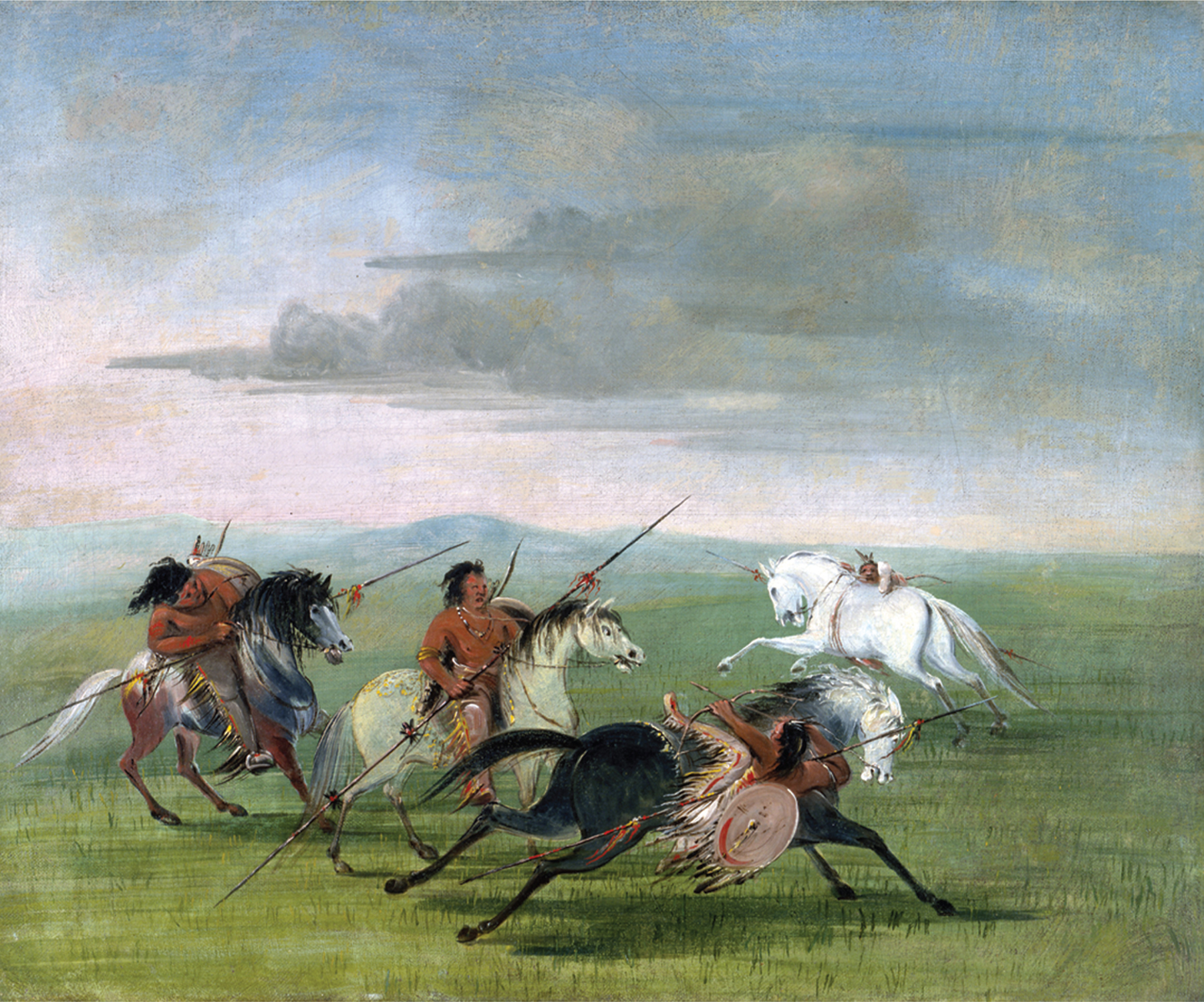The American Promise:
Printed Page 262
The American Promise Value
Edition: Printed Page 248
Osage and Comanche Indians
The three additional expeditions set forth between 1804 and 1806 to probe the contested southwestern border of the Louisiana Purchase. The first exploring party left from Natchez, Mississippi, and ascended the Red River to the Ouachita River, ending at a hot springs in present-
Of the scores of Indian tribes in this lower Great Plains region, two enjoyed reputations for territorial dominance. The Osage ruled the land between the Missouri and the lower Arkansas rivers, while the trading and raiding grounds of the Comanche stretched from the upper Arkansas River to the Rockies and south into Texas, a vast area called Comanchería. Both were formidable tribes that proved equal to the Spaniards. The Osage accomplished this through careful diplomacy and periodic shows of strength, the Comanche by expert horsemanship, a brisk trade in guns and captives, and a readiness to employ deadly force.

In 1804, Jefferson invited Osage tribal leaders to Washington City and greeted them with ceremonies and gifts. He positioned the Osage as equals of the Americans: “The great spirit has given you strength & has given us strength, not that we might hurt one another, but to do each other all the good in our power.” Jefferson wanted a trade agreement that would introduce new agricultural tools to the Osage: hoes and ploughs for the men; spinning wheels and looms for the women. These gendered tools signified a departure from the native gender system in which women tended crops while men hunted game. With an agricultural civilization, men would give up the hunt and thus need far less land to sustain their communities. Jefferson expressed his hope that “commerce is the great engine by which we are to coerce them, & not war.”
In exchange, the Osage asked for protection against Indian refugees displaced by American settlers east of the Mississippi. Jefferson’s Osage alliance soon proved to be quite expensive, driven up by the costs of providing defense, brokering treaties, and giving gifts all around. In 1806, a second ceremonial visit to Washington and other eastern cities by a dozen Osage leaders cost the federal government $10,000.
These promising peace initiatives were short-
By contrast, the Comanche resisted attempts to dominate them. European maps marking Spanish ownership of vast North American lands simply did not correspond to the reality on the ground, and for decades after the Louisiana Purchase of 1803, nothing much changed. In 1807, a newly appointed U.S. Indian agent invited Comanche leaders to Natchitoches in Louisiana where he proclaimed an improbable solidarity with the Comanche: “It is now so long since our Ancestors came from beyond the great Water that we have no remembrance of it. We ourselves are Natives of the Same land that you are, in other words white Indians, we therefore Should feel & live together like brothers & Good Neighbours.” Trade relations flourished, with American traders allowed to enter Comanchería to attend local market fairs, selling weapons, cloth, and household metal goods in exchange for horses, bison, and furs. No matter what the map of the United States looked like, on the ground Comanchería remained under the control of the Comanches and thus off-
REVIEW What was the significance of the Louisiana Purchase for the United States?